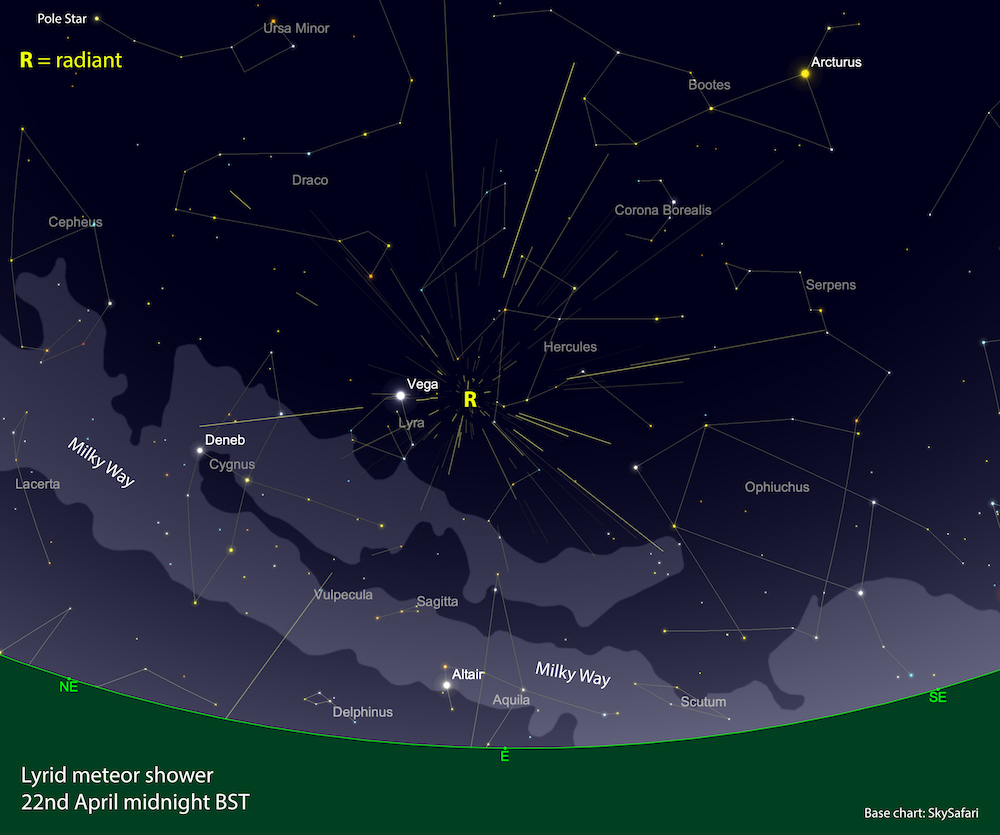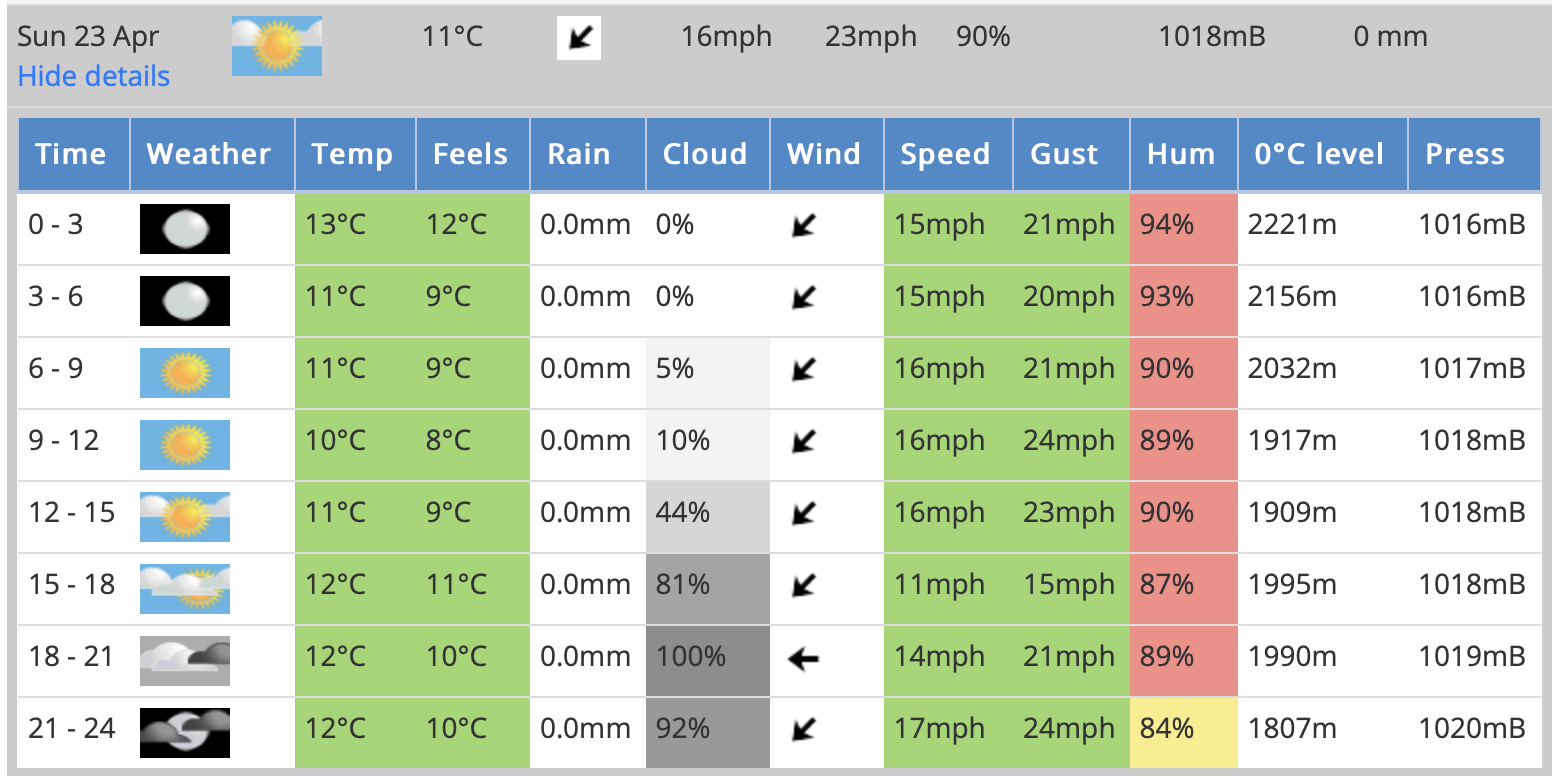


The next couple of weeks will give us a chance to see a burst of activity in the sky above our heads with the Lyrid Meteor Shower due to be visible.
The Astronomy Section of La Société Guernesiaise has given guidance on how best to see the meteor shower and when the peak viewing times will be.
Dr Jean Dean - the Astronomy Secretary for La Société - told Express that the "burst" of activity will occur between Friday 14 April and Sunday 30 April, with the best time to see the shower likely to be overnight between the 22 and 23 April.

Pictured: The night sky chart shows the radiant for the Lyrids meteor shower in the constellation of Lyra.
"The best time to see the shower is in the early morning of the peak day (23 April)," said Dr Dean. "Wait until after midnight when the radiant (R on the pictured chart), in the constellation of Lyra, will have risen in the East.
"The later in the morning you wait, the higher the radiant will rise and the fewer meteors will be hidden below the horizon. But the closer you get to sunrise the brighter the sky is going to become, so plan accordingly!"
The long range weather forecast for Sunday 23 April is showing a very low chance of cloud - as little as 0% - between midnight and 06:00, while the chance of rain is also 0.

Pictured: The long range weather forecast suggests the outlook will be good for star gazers.
Dr Dean explained that meteors are "small chunks of debris typically left in the wake of comets".
When the Earth passes through this trail of material, some of it gets caught in Earth’s gravity and enters the atmosphere.
"The falling objects are moving at very high speeds (about 110,000 mph) and the air in front of them cannot get out of the way, so it compresses and heats up," explained Dr Dean. "Which in turn heats up the meteor to temperatures as high as 1600˚C, causing it to glow as it streaks across the sky.
"Most meteors are very small, little more than dust grains, so they burn up completely in the atmosphere."
The Lyrid meteor shower is associated with 'Comet C/1861 G1 Thatcher', which Dr Dean said is "a long-period comet that last passed by Earth in 1861 at a distance of 30 million miles and is expected to return to the inner Solar System around 2276".
He said "it is the oldest recorded meteor shower still visible today, and was first recorded in 687 BCE".

Pictured: Orbit of Comet C/1861 G1 Thatcher, which at is greatest distance from the Sun (10 billion miles) takes it into inter stellar space. The inset shows the inner Solar System and Earth, once a year passing through the orbit of Comet Thatcher, where it encounters the trail of debris left behind as the comet passed through the inner Solar System in 1861.
Dr Dean advises that anyone wanting to watch the meteor shower, should "wrap up warm and find a dark location with a comfortable perch and let your eyes adjust to the dark, which takes about 20 minutes.
"While the Lyrid meteors will be visible all across the sky, look towards the East for the radiant (R), which is very close to the unmissable bright star Vega."
Dr Dean added that the 'Summer Triangle asterism' - a noticeable pattern of stars which comprises Vega, Deneb and Altair - will also be visible.
"This large triangle straddles the Milky Way; a dense band of stars and dust lanes that snakes across the sky and is the core of our Milky Way galaxy. The reappearance of this triangle after its winter absence, rising above the horizon in the early hours, is a welcome herald of the summer to come," she said.
La Société Guernesiaise's Astronomy Section shares live images of Guernsey’s night sky on its website - astronomy.org.gg
Pictured top: The Perseids meteor shower as seen from Bordeaux, Guernsey, in August 2016. Image credit: Jean Dean.
Astronomy group to host free talks on summer nights
New Observatory honours inspirational astronomer
Solar Open Day for three-fold celebration
Visiting astronomers give local children "sense of wonder"
Clear night skies excite astronomers
Stargazers encouraged to head to dark sky island
Comments
Comments on this story express the views of the commentator only, not Bailiwick Publishing. We are unable to guarantee the accuracy of any of those comments.